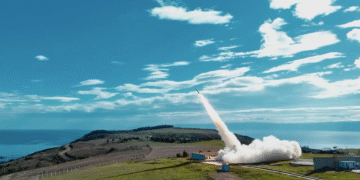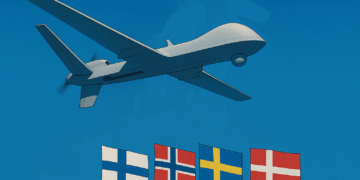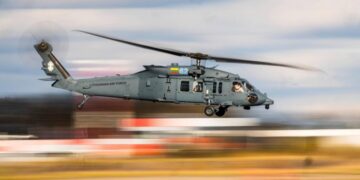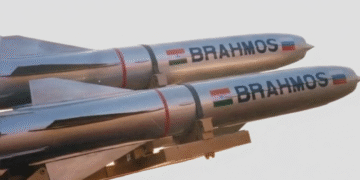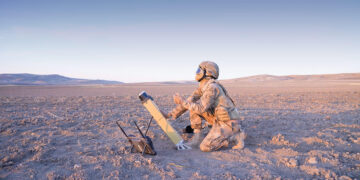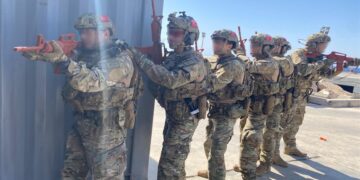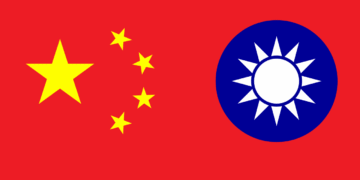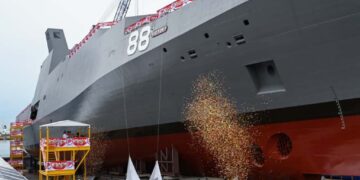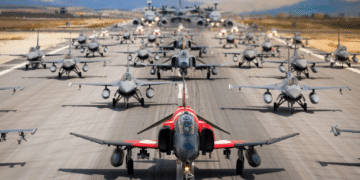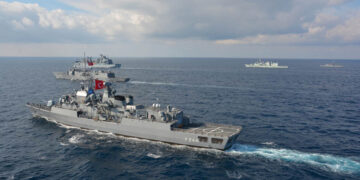On August 15, the meeting between President Vladimir Putin and President Donald Trump was described by some as “historic” and by others as a “disaster,” but ultimately, President Putin came out ahead in any case. The very next day in the Oval Office, what should one make of the images of European leaders with President Trump in his office…?
What makes the situation so dramatic is not reliving the past for you, but rather sharing a clue about the present and, to a small extent, the future. As C4 Defence Magazine, we have continued to call this conflict “The War in the Black Sea Basin” from day one. Evaluating it narrowly as a war between just two countries ignores Russia’s larger strategic vision. Control of the Black Sea extends to President Putin’s “Five Seas” concept and his understanding of national security.
As we emphasized in the early days of the war, Russian military doctrine primarily consists of maneuvers aimed at seizing small territories. Its attempt to occupy as large a territory as Ukraine came as a surprise to everyone and ultimately resulted in partial failure. As I have shared with you in the past, changing conditions on the battlefield have made it necessary to return to old, well-known, and secure combat tactics.
Artillery fires, infantry advances (now using motorcycles). A new tactical addition in the present is the use of UAVs and armed UAVs (UCAVs). Robotic capabilities, entering the battlefield in the 21st century as technological innovations, have been widely utilized by both sides and have already been witnessed as part of the Russian army’s long-range artillery support.
It is clear that the Russian army has gained significant combat experience. Firstly, the command structure, consisting of officers and non-commissioned officers, has acquired invaluable knowledge. Whether the period of witnessing insufficient military preparation is entirely behind us is unclear; however, the development of military equipment has accelerated significantly.
The number of models produced in the AMT direction, which is at the forefront of the army’s offensive capabilities, is limited to three. Priority has been given to achieving annual production of 300 T-90M tanks. Despite ongoing issues with the T-14 Armata, serial production has begun, and the production of various T-80 versions continues to sustain the war. In parallel, production of over 1,500 modern armored personnel and combat vehicles per year for frontline use has commenced.
The Russian army’s most valuable weapon has always been its artillery. It is natural that artillery systems, neglected for thirty years, are once again receiving attention. The serial production of systems such as Magrolia, Msta, Malva, Gratsint, and Koalitsiya-SV has accelerated. Carrier tractors for KMO units, reaching an annual production of 400 units, are preferred on T-90 chassis. Ammunition production capacity has already quadrupled compared to the past, with the installation of new production lines ongoing.
These newly produced vehicles are not being sent to the Ukrainian front. As observed, they are being used for training with new military personnel and allocated to the formation of new units. The main issue begins here. Almost all of the production capacity reached between 2024–2025 is being reserved, and the level of military readiness is being increased.
“What’s the purpose of this?” The answer is clear. The feared scenario is preparation for defense and counteroffensive against a possible NATO or EU military intervention. Additionally, the targets may include countries in northern Europe, or a new front in Ukraine may be opened to achieve strong offensive capability with large mechanized units. For now, we are following and analyzing these modern units day by day.
Significant changes are taking place, especially along the long Finnish border. In the Leningrad region, while only 30,000 Russian troops are currently on defense, new housing and military facilities are being planned to accommodate 100,000 soldiers. Defensive structures are being established in the Murmansk and Kandalaksha regions, and old Soviet military depots and barracks are being reactivated. The renovation of railways and facilities, the foundation of Russian logistics, is also a sign of active military operations.
NATO’s response to this movement will be the establishment of a NATO command headquarters in Finland. Additionally, we will witness the renovation of airbases in the region, creation of military depots, and an increase in winter exercises.
It should be noted that the Russian Armed Forces have drawn significant lessons, and this is not limited to the land battlefield. Warship construction has accelerated, and in line with old Soviet doctrine, submarines are being prioritized. Modern ammunition developments for naval use are also being observed. Investments to restore amphibious capabilities are expected in the near future.
Although the air and space sector appears to be a priority, new investments are currently minimal. It is known that Russia’s recent deep strikes into Ukrainian territory have significantly affected President Putin and his inner circle. New initiatives are expected to restructure the Russian Air Force; however, for now, fighter production remains limited to Su-30, Su-35, and Su-57 models. This year, production of 60 modern aircraft is expected.
The seemingly small number should not mislead us. Priority is given to the more economical UCAVs and UAVs. Since the radical changes in usage in the fall of 2022, the Russian army has adapted to these conditions and learned lessons. Drones of all sizes are being used on the front, almost all adapted from civilian use, providing cheap and effective solutions.
To meet urgent needs, the transfer of Iran-produced Shahed-class kamikaze drone technology, costing no more than $15–20,000, has accelerated the development of the Russian defense industry in this field. Initially, production reached 200 units per day, but increasing needs created new supply chains and sped up development.
In the past three months, the number of Shahed-class kamikaze UCAVs sent has exceeded 15,900. Tactics have been developed, and 500–600 Shahed units are deployed daily over Ukraine in a single wave. These airstrikes, supported simultaneously by cruise or ballistic missiles, are new tactics aimed at overcoming Ukraine’s layered air defense.
New developments in the Russian defense industry are observed in Shahed and similar kamikaze systems. Warheads have been strengthened, and models with satellite-guided and camera-assisted terminal strike capabilities are in use, which is concerning. Additionally, jet-powered variants reaching speeds of 500 km/h have been deployed.
Production speed of all these UCAVs has increased, with a daily target of 1,000 units.
Russia’s massive defense industry in rocket and missile production should not be forgotten. Lessons from the war have led to significant advances, and this industry, dormant for 30 years, is now active again. Old Soviet-made missiles are being replaced by new designs with modern technology, highly precise guidance, and “heavy” warheads.
Another important observation is that these ballistic and cruise missiles reach far beyond the current front lines, covering the European continent; this places NATO countries within striking range. It is known that these new technology missiles have begun annual serial production of 2,500–3,000 units.
Unseen electronic warfare capabilities have increased so much that both sides have made significant progress in this field.
As seen, Europe’s defense industry and military structures will take time to reach sufficient power against the developing Russian army. Conventional military structures are rapidly shifting in Russia’s favor, and a significant lead is expected by 2029. As long as NATO countries remain united, there is no immediate cause for alarm, but nuclear-armed states may limit themselves in warfare.
Once again, it should be reminded: NATO is a nuclear power, and its conventional forces, especially air power, are the cornerstone of deterrence.
President Putin and his military staff have left behind the initial shock and failures of the Russian army in the first days of the war. They are now preparing a renewed military structure capable of achieving success.
If the goal is to be recognized as a global power rather than just a regional power, there is still a long way to go.
In the Black Sea region, they are not yet ready for the guns to fall silent…


